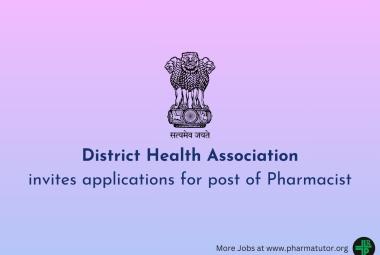About Authors: Pratham Rathore *[1], Dhaval Patel [1], Vipin Rastogi [2]
1. School of Pharmaceutical Sciences,
Jaipur National University, Jaipur -302025, (Rajasthan.), India
2. Nariender Mohan hospital and heart center,
Ghaziabad, (Uttar Pradesh), India
ABSTRACT: Inpresent study,the current status of nosocomial infection, rate of infection and distribution of infectionwas analysed in patients admitted in MICU of a multispecialty hospital.Clinical data were collected from patients that presented with symptoms of nosocomial infection in MICU. We examined of 128 patients who were admitted in Nariender mohan hospital, Ghaziabad from August 2010 to May 2011. The research approach adopted in the study was a retrospective method. Incidence of nosocomial infections in M.I.C.U patients was 10.93% (14/128 patients). Urinary tract infection (42.85%) was the most frequent; followed by Lower respiratory infection (14.28%), surgical site infection (14.28%), Gastroenteritis (14.28%), Blood stream infection and Meningitis (7.14%). The nosocomial infection was seen more in the 40 to 60 year of age. The male was more prone to nosocomial infections than the female. Nosocomial infections are common in geriatric patients in the MICU setting. More studies are needed to be carried out in Indian population to plan long term strategies for prevention and management of nosocomial infections.
[adsense:336x280:8701650588]
Reference ID: PHARMATUTOR-ART-1161
INTRODUCTION
Infections acquired during hospital stay aregenerally called nosocomial infections. Formerly, they were defined as infections arising after 48 hours of hospital admission. NNIS system defines a nosocomial infection as a localized or systemic condition that results from adverse reaction to the presence of an infectious agent(s) or its toxin(s) that was not present or incubating at the time of admission to the hospital1. As incubation period varies with the type of pathogen and patients underlying condition, each infection must be assessed individually. As incubation period varies with situations in which an infection is considered to be nosocomial;
(i) Infection that is acquired in the hospital, but does not become evident until hospital discharge.
(ii) Infection in a neonate that results from passage through birth canal.
The elderly have defective host defenses that compromise their ability to ward off infectious agents. Factors which influence immune competence areimmune senescence, changes in non adaptive immunity, chronic diseases, medications, malnutrition and functional impairments. T-lymphocyte production and proliferation decline with age, which results in decreased cell-mediated immunity and decreased antibody production to new antigens. Thinning of skin, enlarged prostate, diminished cough reflex and other anatomic or physiologic accompaniments of aging are changes in non adaptive immunity that render the elderly more vulnerable to infection. Chronic diseases such as cancer, malnutrition, atherosclerosis, diabetes mellitus, and dementia predispose to certain types of infections2.
[adsense:468x15:2204050025]
In addition to these, functional impairments(like immobility, incontinence, dysphasia) associated with aging necessitate the use of urinary catheters, feeding tubes, and other invasive devices enhancing susceptibility to nosocomial infections3. There is an urgent need to focus our attention to problems of geriatric patients, specifically infections among MICU admissions. According to published literature.4, 5, 6 The most prevalent nosocomial infections among patients in the ICU are urinary tract infection, pneumonia, bloodstream infections, skin and soft tissue infections, gastro-enteritis, hepatitis and central nervous system infections like meningitis.
NOW YOU CAN ALSO PUBLISH YOUR ARTICLE ONLINE.
SUBMIT YOUR ARTICLE/PROJECT AT articles@pharmatutor.org
Subscribe to Pharmatutor Alerts by Email
FIND OUT MORE ARTICLES AT OUR DATABASE
MATERIAL AND METHODS
The study was a retrospective analytical study. The methodology involved collection of data of
Nosocomial infections from patient records, analysis of infections, their causes and distribution pattern ofpathogens. To carry out this work, a total of 128 records of patients admitted to multidisciplinary MICU during December 2010 to May 2011 at Nareiender mohan Hospital, Ghaziabad were considered and out of these 14 belonged to medical [non surgical] cases. Detailed history and physical examination notes were reviewed in all patients. A diagnostic criterion for nosocomial infection is given in table 1.
|
Nosocomial Infection |
Clinical features |
Laboratory features |
|
Urinary tract infection |
1. Fever 2. Lower abdominal pain Change in urine characteristics |
1. Leukocytosis 2. Positive urine culture (105 CFU of a single organism per ml of urine) |
|
Pneumonia
|
1. Fever 2. Pleuritic chest pain 3. Decreased intensity of breath sounds 4. Presence or increase in rales |
1. Leukocytosis 2. Sputum for Gram stain 3. Positive sputum culture 4. Positive chest x-ray |
|
Blood stream Infections |
Unexplained fever with chills and rigor Pain, tenderness or purulent drainage at the site of insertion of IV access or CVP Catheter |
1. Leukocytosis 2. Positive blood culture 3. Positive CVP catheter culture (after catheter removal) |
|
Skin and soft tissue Infections |
1. Pain, swelling, tenderness or inflammation and warmth of skin 2. Purulent drainage from skin 3. Fever |
1. Smear for Gram stain 2. Positive swab culture 3. Leukocytosis |
|
Gastroenteritis |
1. Increased frequency of stools 2. Change in consistency of stools 3. Fever 4. Dehydration |
1. Leukocytosis 2. Positive stool culture |
|
Meningitis |
1. Fever 2. Altered sensorium 3. Headache 4. Neck stiffness 5. Vomiting |
1. Leukocytosis 2. CSF- cell count, cell type, culture, sugar, protein
|
RESULT
The present study was conducted on 128 patients admitted in hospital MICU.Fourteen of 128 patients (10.93%) admitted to theMICU suffered from nosocomial infection, there were 11 males and 03 females. The mean duration of stay of the patients in the hospital was 14.4 days. Table 2 gives the distribution of the nosocomial infections in these patients.
Table 2: Distribution of nosocomial infections
|
Nosocomial infections |
No. of patients |
Percentage
|
|
Urinary tract infection |
06 |
42.85% |
|
Pneumonia |
02 |
14.28% |
|
Soft tissue infections |
02 |
14.28% |
|
Gastroenteritis |
02 |
14.28% |
|
Blood stream infections |
01 |
7.14% |
|
Meningitis |
01 |
7.14% |
In our study, we observed that the distribution of nosocomial infections in MICU patients were UTI (42.85%), LRTI (14.28%), SSI (14.28%), GI (14.28%), BSI(7.14%) and meningitis (7.14%).
Table 3: Pathogens isolated in various nosocomial infections
|
Organisms Isolated |
Diseases
|
|||||
|
|
Urinary Tract Infections
|
Pneumonia |
Skin &Soft tissue infection |
Gastroenteritis |
Blood stream infections |
Meningitis |
|
Pseudo. Aeruginosa |
2(33.3%) |
|
|
|
|
|
|
E.coli |
2(33.3%) |
|
|
2(100%) |
|
|
|
Gram -ve aerobes |
|
1(50%) |
|
|
|
|
|
Candida albicans |
1(16.6%) |
|
|
|
|
|
|
Coagulase -ive Staph. |
|
|
|
|
|
|
|
Staph. Aureus |
1(16.6%)
|
|
|
|
1(100%) |
|
|
Staph. Epidermidis |
|
|
1(50%) |
|
|
|
|
Unidentified
|
|
1(50%) |
1(50%) |
|
|
1 (100%) |
|
Total
|
6 (100%) |
2(100%) |
2(100%) |
2(100%) |
1(100%) |
1(100%) |
The distribution of pathogens in nosocomial infection was described in table 3. According to study the common pathogens for nosocomial infection was Pseudomonas Aeruginosa (urinary tract infection), E.coli (urinary tract and gastroenteritis), Staphylococcus Aureus (urinary tract and blood stream infection) and staphylococcus epidermidis (surgical site infection).
Table 4: Device related Nosocomial infections
|
Type of Nosocomial Infection (n) |
Type of Device used |
Infection with device |
Infection without device |
|
Urinary tract infection (06) |
Catheter |
04 (66.6%) |
02 (33.3%) |
|
Pneumonia (02)
|
Ventilator support |
01 (50%) |
01 (50%) |
|
Blood stream infections (01) |
CVP catheter |
01 (100%) |
|
|
Others (05)
|
- |
- |
05 |
|
Total (14)
|
|
06 (43.85%) |
08(57.14%) |
In our study, we have isolated the pathogens ofthe various nosocomial infections of our target group and found that most of the nosocomial infections were device related which are shown in table 4. Urinary tract infection was related to urinary catheter; pneumonia was related to ventilator and blood stream infections were related to CVP catheter.
DISCUSSION
The incidence of nosocomial infections in our study was 10.93 % compared to 33.5% by Beaujean et al7 & 16.02% in the hospital record of N.M hospital and heart centre. However, our study population consisting of 14 patients out of 128 MICU admissions is a relativelysmall sample size. The general distribution pattern of the nosocomial infections that emerged in our study showed urinary tract infection to be the most common, followed by pneumonia, skin and soft tissue infections, bloodstream infections, gastroenteritis, meningitis. Our study population of 14 patients included 11 male and 03 female patients. The pathogen distribution of nosocomial infections in our study does not differ significantly with the findings of Richards et al. However, we found that Pseudomonas aeruginosa to be the predominant cause of nosocomial UTI in contrast to Candida albicans reported by Richards et al 8, 9.
CONCLUSION
In study, the geriatric population is highlyvulnerable to nosocomial infections. Geriatric patients have defective host defenses that compromise their ability to ward off infectious agents. Our findings are similar to observations made in other studies in literature. Urinary tract infections and pneumonias are the common nosocomial infections. Our study also reveals that the incidence of infections increases with use of invasive devices. Early recognition of infections restricted and short term use of invasive devices can therefore, contributes significantly towards decreasing the incidence of nosocomial infections in geriatric patients. We suggest that systematic and standardized large scale studies be carried out on elderly population for prevention and management of nosocomialinfections.
REFERENCES
1. WGarner J.S, Jarvis W.R, Emory T.G, Horan T.C, Hughes J.M. CDC definitions for nosocomial infections. American Journal of Infection Control 1988; 16: 28-40.
2. Strausbaugh L.J. Emerging Health Care associated infections in the geriatric population. Emerging Infectious Diseases Publication 2001; 7(2).
3. Taylor M.E, Oppenheim B.A. Hospital acquired infection in elderly patients. Journal of Hospital Infection 1998; 38: 245-260.
4. Crossley K.B, Peterson P.K. Infection in elderly, principles and practice of infectious diseases. 5th edition Philadelphia, 2000; 3164-3169.
5. Emori T.G, Bannerjee S.N, Culver D.H. Nosocomial infections in elderly patients in United States. American Journal of Medicine 1991; 91 (3): 289-293.
6. Richards M.J, Edwards J.R, Culver D.H. Nosocomial infections in combined medical surgical intensive care units in U S. Infection Control Hospital Epidemiology 2000; 21: 510-515.
7. Beaujean D.J, Blok H.E, Grauls C.M. Surveillance of nosocomial infection in geriatric patients. Journal of Hospital Infection 1997; 36: 275-284.
8. Richards MJ, Edwards JR, Culver DH, Gaynes RP. Nosocomial infections in medical intensive care units in United States. National nosocomial infection surveillance system. Critical Care Medicine 1999; 27: 887-892.
9. National Nosocomial Infections Surveillance (NNIS) System, Centers of Disease Control and Prevention. National Nosocomial Infections report, data summary from October 1986 - April 1996. American Journal of Infection Control 1996; 24: 380- 388.
NOW YOU CAN ALSO PUBLISH YOUR ARTICLE ONLINE.
SUBMIT YOUR ARTICLE/PROJECT AT articles@pharmatutor.org
Subscribe to Pharmatutor Alerts by Email
FIND OUT MORE ARTICLES AT OUR DATABASE









